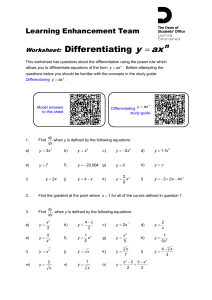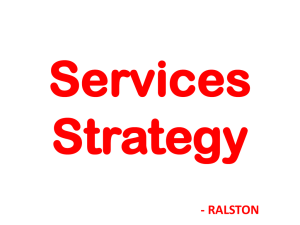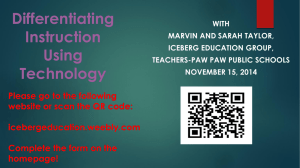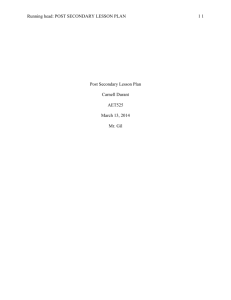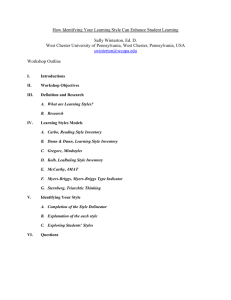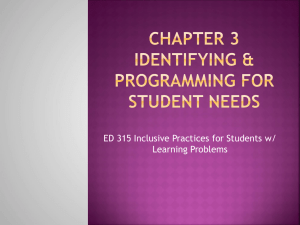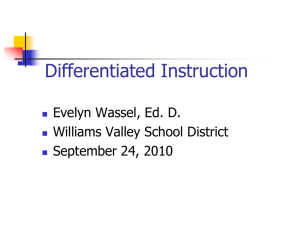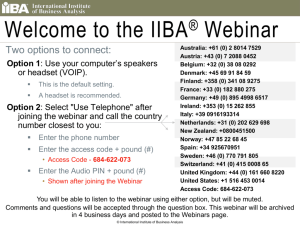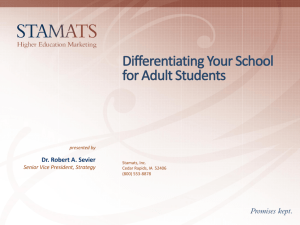Four Ways to Differentiate Instruction
advertisement
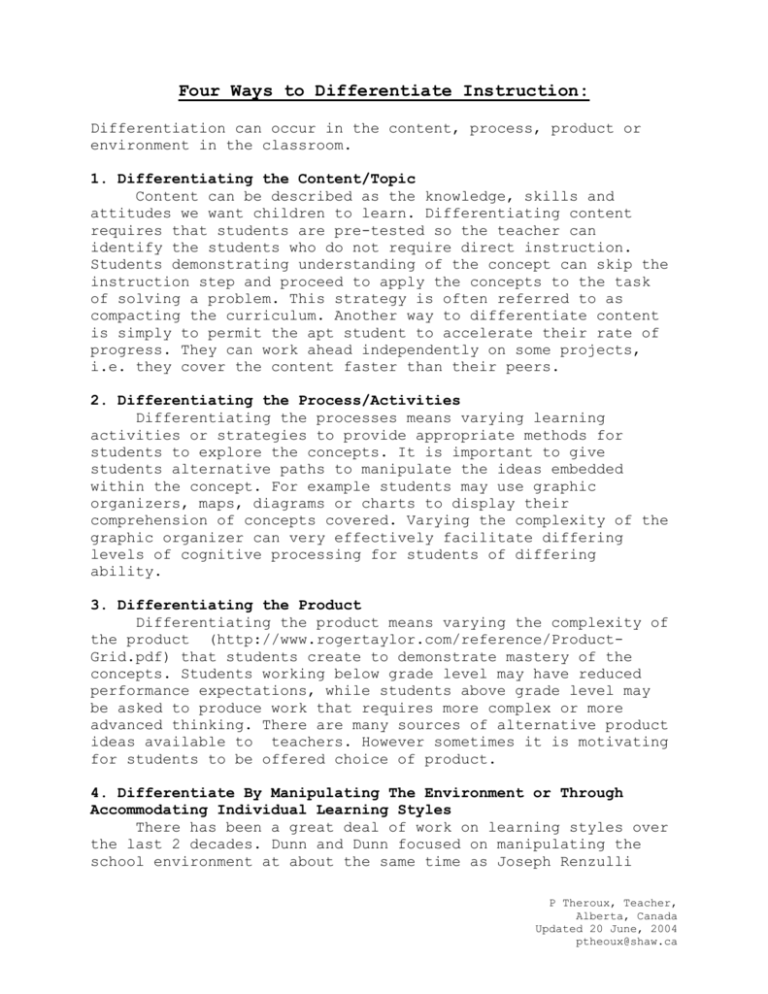
Four Ways to Differentiate Instruction: Differentiation can occur in the content, process, product or environment in the classroom. 1. Differentiating the Content/Topic Content can be described as the knowledge, skills and attitudes we want children to learn. Differentiating content requires that students are pre-tested so the teacher can identify the students who do not require direct instruction. Students demonstrating understanding of the concept can skip the instruction step and proceed to apply the concepts to the task of solving a problem. This strategy is often referred to as compacting the curriculum. Another way to differentiate content is simply to permit the apt student to accelerate their rate of progress. They can work ahead independently on some projects, i.e. they cover the content faster than their peers. 2. Differentiating the Process/Activities Differentiating the processes means varying learning activities or strategies to provide appropriate methods for students to explore the concepts. It is important to give students alternative paths to manipulate the ideas embedded within the concept. For example students may use graphic organizers, maps, diagrams or charts to display their comprehension of concepts covered. Varying the complexity of the graphic organizer can very effectively facilitate differing levels of cognitive processing for students of differing ability. 3. Differentiating the Product Differentiating the product means varying the complexity of the product (http://www.rogertaylor.com/reference/ProductGrid.pdf) that students create to demonstrate mastery of the concepts. Students working below grade level may have reduced performance expectations, while students above grade level may be asked to produce work that requires more complex or more advanced thinking. There are many sources of alternative product ideas available to teachers. However sometimes it is motivating for students to be offered choice of product. 4. Differentiate By Manipulating The Environment or Through Accommodating Individual Learning Styles There has been a great deal of work on learning styles over the last 2 decades. Dunn and Dunn focused on manipulating the school environment at about the same time as Joseph Renzulli P Theroux, Teacher, Alberta, Canada Updated 20 June, 2004 ptheoux@shaw.ca 2 recommended varying teaching strategies. Howard Gardner identified individual talents or aptitudes in his Multiple Intelligences theories. Based on the works of Jung, the MyersBriggs Type Indicator and Kersley's Temperament Sorter focused on understanding how people's personality affects the way they interact personally, and how this affects the way individuals respond to each other within the learning environment. The work of David Kolb and Anthony Gregorc's Type Delineator follows a similar but more simplified approach. Even though these approaches look at learning styles in vastly different ways they all have merit for some children. However, an amalgamation or blending of these concepts is probably more effective than any one approach. The Dunn and Dunn approach would be most effectively applied in a building designed to accommodate environmental changes. Many classrooms offer limited opportunities to change the lighting or sound levels, to eliminate visual distracters, or to provide a more casual seating arrangement for students. Varying teaching strategies makes sure that students will occasionally learn in a manner compatible with their own learning preference but also expands their repertoire of alternative learning strategies in turn. The Multiple Intelligences Theory is very helpful for helping teachers recognize that students have differing aptitude in different subject areas, but it still requires the application of the kinds of learning strategies listed here to be effective. The MBTI and Gregorc's Style Delineator help teachers recognize how personality differences can either enhance or distract from communication between individuals. The most significant issue relating to learning styles is the paradigm shift in education in recent years. This paradigm shift is illustrated in the way that curriculum is presently defined in the most recent programs of studies. Curriculum is no longer defined in terms of what a teacher will teach but rather in terms of what a student will be able to demonstrate. If we are to be responsible for what a child learns then it is essential that we understand what (s)he knew at the beginning and how to move him/her forward from that point in a successful manner. This means we need to understanding how each student learns best. It also means that we need to build on what they already know. Within these four ways for differentiating there are embedded many learning strategies which are used in conjunction with each other.
